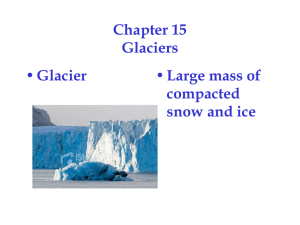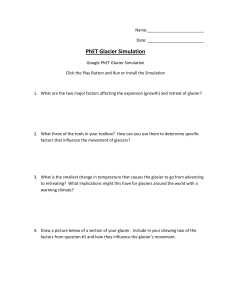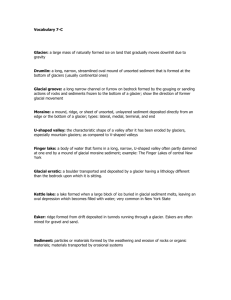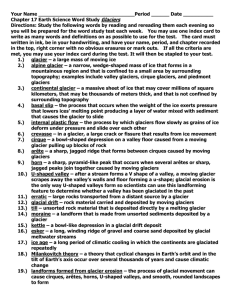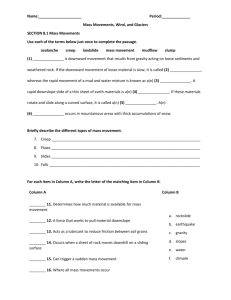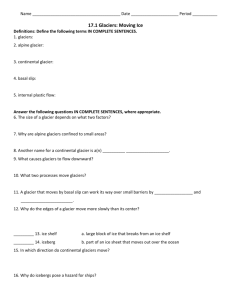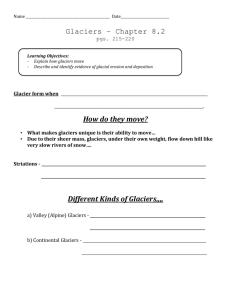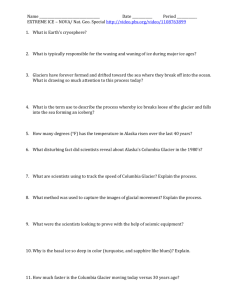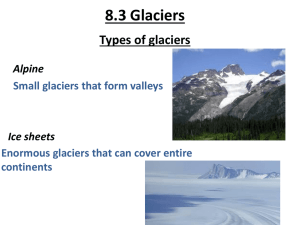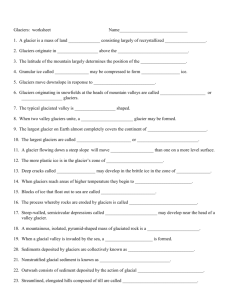File - Genesee Science
advertisement
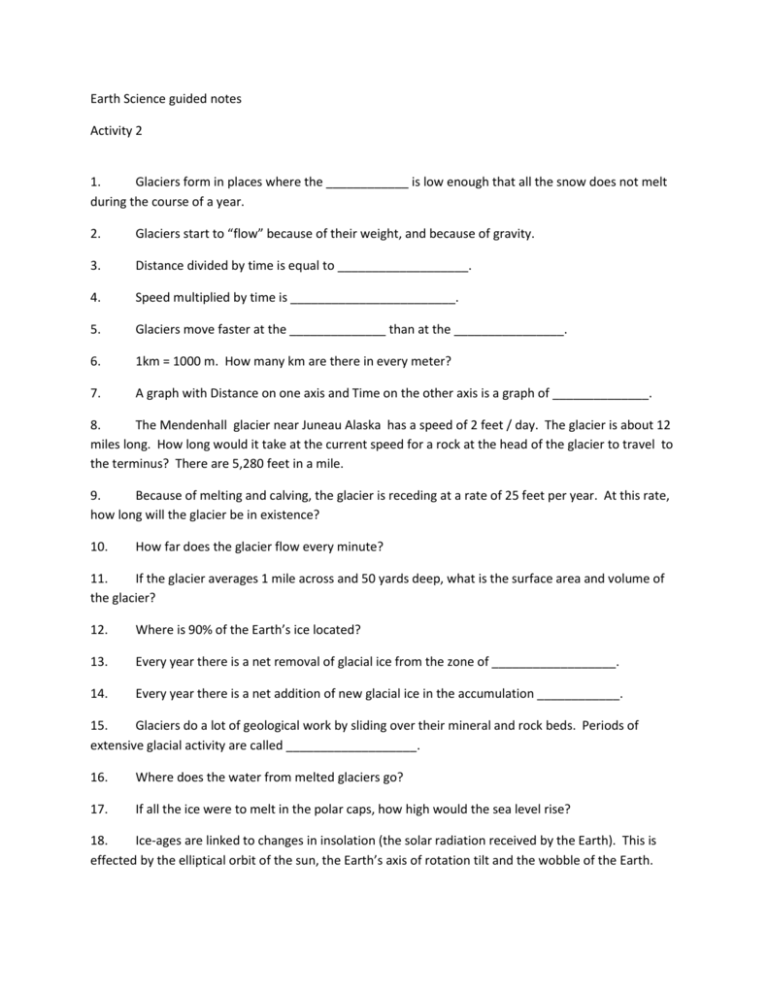
Earth Science guided notes Activity 2 1. Glaciers form in places where the ____________ is low enough that all the snow does not melt during the course of a year. 2. Glaciers start to “flow” because of their weight, and because of gravity. 3. Distance divided by time is equal to ___________________. 4. Speed multiplied by time is ________________________. 5. Glaciers move faster at the ______________ than at the ________________. 6. 1km = 1000 m. How many km are there in every meter? 7. A graph with Distance on one axis and Time on the other axis is a graph of ______________. 8. The Mendenhall glacier near Juneau Alaska has a speed of 2 feet / day. The glacier is about 12 miles long. How long would it take at the current speed for a rock at the head of the glacier to travel to the terminus? There are 5,280 feet in a mile. 9. Because of melting and calving, the glacier is receding at a rate of 25 feet per year. At this rate, how long will the glacier be in existence? 10. How far does the glacier flow every minute? 11. If the glacier averages 1 mile across and 50 yards deep, what is the surface area and volume of the glacier? 12. Where is 90% of the Earth’s ice located? 13. Every year there is a net removal of glacial ice from the zone of __________________. 14. Every year there is a net addition of new glacial ice in the accumulation ____________. 15. Glaciers do a lot of geological work by sliding over their mineral and rock beds. Periods of extensive glacial activity are called ___________________. 16. Where does the water from melted glaciers go? 17. If all the ice were to melt in the polar caps, how high would the sea level rise? 18. Ice-ages are linked to changes in insolation (the solar radiation received by the Earth). This is effected by the elliptical orbit of the sun, the Earth’s axis of rotation tilt and the wobble of the Earth.

